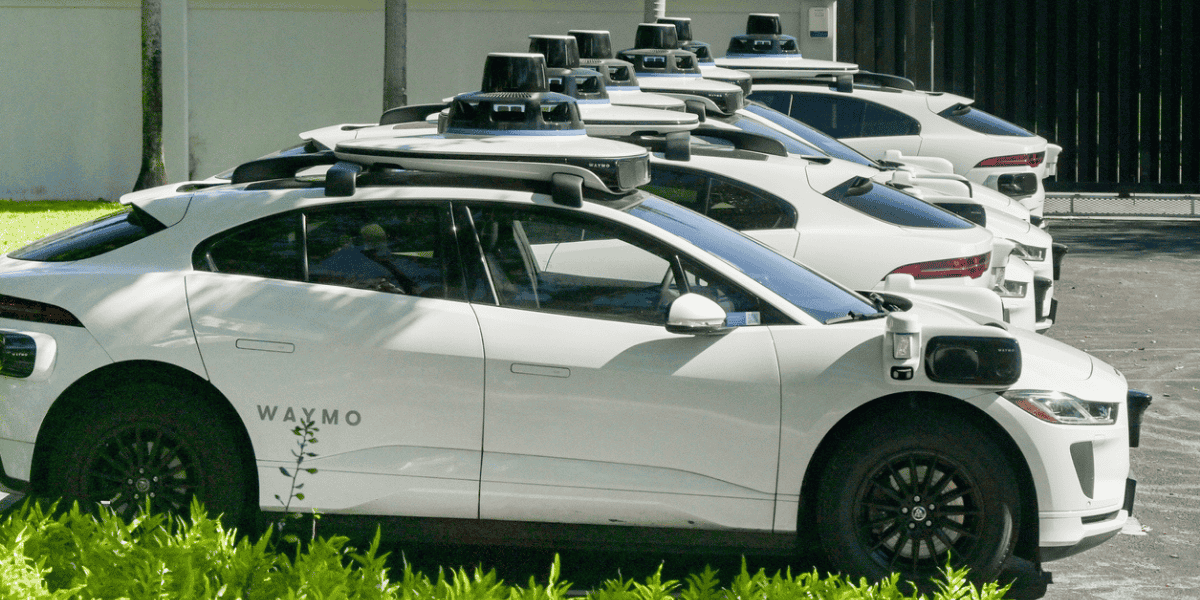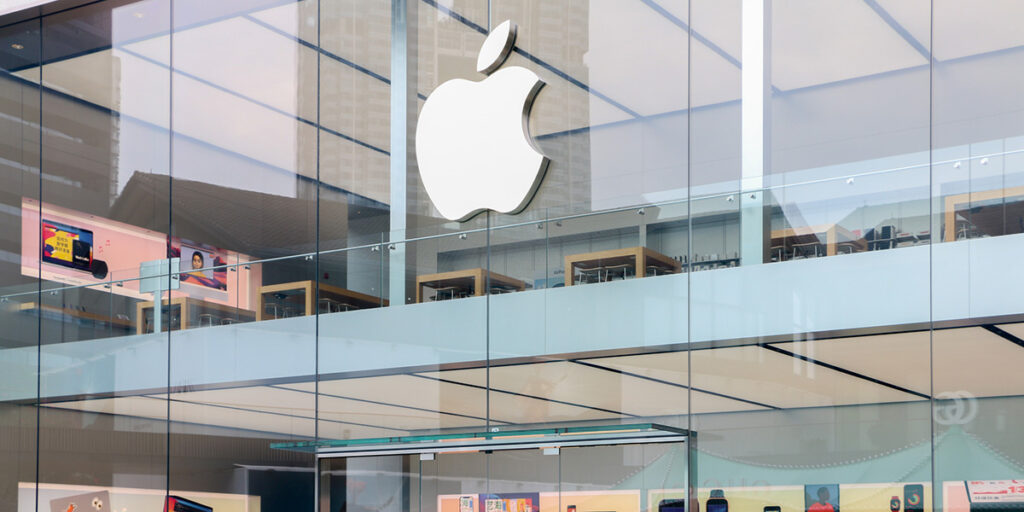For those of you who would prefer to listen:
Alphabet reported earnings this week, kicking things off for the Tech Titans and providing an update on the state of AI. The company raised its planned investment spend for the year by $10 Billion, to $85 Billion. The AI race keeps accelerating.
Alphabet’s autonomous vehicle business, known as Waymo, is a standout for the Silicon Valley titan. It’s also a key to Google’s future success.
Waymo is essentially the only American company to operate robotaxi services with paying passengers. It has over 1,500 vehicles in circulation. There are over 250,000 rides every week across San Francisco and Los Angeles in California, Phoenix in Arizona and Austin in Texas. Waymo just launched in Atlanta last month. Washington DC and Miami are believed to be next. Waymo’s reach is widening.
Waymo’s origin goes back to Google X labs, which was its “Moonshot” division. It began as Google’s Self-Driving Car Project in 2009. It was spun off as a separate company, under the Alphabet umbrella in 2016. Waymo’s roots can be traced to Stanford’s Racing Team which competed in the U.S. Department of Defense’s innovative challenge in 2005. It came out of Stanford’s Artificial Intelligence Lab. The name Waymo doesn’t mean anything on its own but is short for “A new way forward in mobility” – Way-Mo.
All Waymo vehicles in San Francisco are brand-new electric Jaguars. They are really nice and comfortable rides. I did my first Waymo run a few weeks back, with a close friend named John who likes experiencing cool new stuff too. John and I did a tour around San Francisco, covering the Embarcadero and Mission Bay to Nob Hill and through the Presidio to the Golden Gate. I recorded the experience for those that might have an interest in seeing how it goes without getting in the car themselves. We picked the Waymo up at Red’s along the Embarcadero. Red’s is an institution, perhaps not for everyone. But those who know, know.
Google’s autonomous vehicles have experienced exponential growth. By the Summer of 2015, the self-driving cars had covered over 1 Million miles. During that span, the cars encountered over 200,000 stop signs, 600,000 traffic lights, and 180 Million other vehicles. That is a lot of data and a lot of experience to record and learn from. It expanded its tests to Arizona and Washington State, to encounter climates hot and dry as well as dark and wet. This all included human drivers at the ready.
In 2018, the State of California issued Waymo a permit to allow testing on the roads without drivers. That changed everything. Waymo was the first company to receive a permit for day and night testing on public roads and highways. In 2020, Waymo started offering paid public driverless rides in Arizona. In 2022, Waymo started offering driverless rides to Google employees in San Francisco. It opened to the public a year later. The streets of San Francisco are deemed a little more challenging to navigate than those in the desert. Michael Douglas knows that.
Waymo had 1 Million paid rides by year-end 2023. It jumped to 5 Million thru 2024. So far in 2025, there have been over 10 Million already, averaging 250K per week. It should reach well over 20 Million by year’s end.
The company has logged over 50 Million driverless hours across 33 Million miles. It’s the equivalent of driving across the country 11,000 times. That’s a lot of experience. That’s a lot of data.
Many companies competing with Waymo have given up. Uber and Lyft threw in the towel and are now partnering. General Motors quit driverless completely. It’s certainly a capital intensive business.
Waymo is collaborating with Uber in Atlanta and Austin where rides are obtained exclusively through the Uber app. The way it works: Uber manages the fleet of cars. Waymo handles the operations. The initial results in Atlanta seem pretty positive. The results in Austin have been more mixed, with experiences of stalled cars, stopping at yellow lights and taking longer routes. But one of the biggest complaints in Austin is not enough Waymo’s to ride! Demand is sky high. Sometimes you have to take complaints with a grain of salt. AI is about machine learning. It’s also about people learning.
Waymo runs on AI, maps, sensors and human feedback. Waymo manufactures a suite of self-driving software and hardware developed in-house. This includes sensors and hardware-enhanced vision system, radar and lidar. The sensors give 360-degree views while lidar detects objects up to 1,000 feet away. It’s pretty remarkable how quick it responds to barriers and activity around it.
Tesla launched its robotaxi service a month ago in Austin. The driverless vehicles are Tesla’s Model Y SUVs equipped with its autonomous driving technology. The Tesla robotaxis reportedly only operate in daylight and only in a geofenced area of Austin. Tesla runs on cameras and AI. What’s more, all vehicles have a human riding along in the front passenger seat to ensure safety.
Waymo is trying to crack the Big Apple, with plans to test again already in place. But New York City does not allow for autonomous vehicles. Waymo’s might require a human behind the wheel in Manhattan. The company is lobbying hard here for full autonomy. Stay tuned on that.
Elon Musk said this week that Tesla’s Robo taxis will expand to the Bay Area, Arizona and Florida shortly and will be accessible to half the U.S. population by the end of the year. End of the year? That would be in 5 months. That is some serious expansion speed. Musk is definitely known for lofty goals.
Amazon wants in on the action too. The company’s Robo taxi startup Zoox just announced “the first-ever serial production facility for purpose-built robotaxis in the US.” The property is in Hayward, just off the San Mateo Bridge. The plant spans 220,000 square feet where Amazon envisions over 10,000 robotaxis will be built per year. The “purpose-built” Zoox robotaxi has a very unique design; It has no steering wheel nor does it have pedals. Zoox vehicles look more like toaster ovens on wheels. The company currently tests them in San Francisco, mostly in the SoMa (South of Market) neighborhood and expects to onboard public riders soon.
The Hayward plant is Zoox’s second production facility in the Bay Area. It has a smaller facility in Fremont, while its headquarters are in Foster City. Amazon expects the cutting-edge Hayward facility to eventually employ hundreds of people who will work alongside autonomous robots to expand its innovative approach to transportation.
All of this activity is not relegated to America. Waymo is expanding overseas too, with tests initiated in Japan late last year. But China is the real threat here. It’s unclear how many autonomous vehicles are actually in circulation in China. But China is moving fast in this space and is already the leader in electric vehicles. Reports indicate autonomous capabilities are quickly being incorporated in new models.
The AI race is real and it’s hyper-competitive. China is in it to win it, which is why the United States needs to keep the foot on the pedal to maintain its lead. Half of the world’s AI developers are in China. American Tech Stack needs to be available and pervasive to markets around the globe. AI is mostly running on the American platform now. Most programming language is in English; At least today. It needs to stay that way. Washington has been making moves towards that goal.
It’s being estimated that there will be over 12 Million fully autonomous vehicles in circulation by the end of the decade. 4.5 Million will be in the United States. What’s more, 60% of all car sales are expected to have some form of driverless capability then.
Safety is clearly an issue. Autonomous is far from perfect. But then again, so are humans. Waymo is required by the California DMV to report the number of incidents where the safety driver took control for safety reasons. In 2023, Waymo claimed only 3 crashes with injuries over the course of 7 Million miles driven. That’s statistically nearly twice as safe as a human driver.
A recent peer-reviewed study by Waymo researchers found that collisions with bicycles and motorcycles were 82% less frequent for Waymo cars than for human drivers, and that collisions with pedestrians were 92% less frequent. Then there’s this: Waymo doesn’t drink and drive. Waymo doesn’t text and drive. And Waymo does not suffer road rage.
The sky’s the limit when it comes to possibilities in AI. Beyond Robo taxis, down the road we’ll be seeing driverless buses and shuttles. Autonomous trucks and big rigs aren’t far away from carrying cargo from coast to coast. Today, planes, trains and ships largely operate themselves for the majority of their journeys.
History has proven that the key to a better future for we humans has been to keep pushing an abundance of new ideas. That’s what innovation is about. That leads to growth. Technological innovation has been the key driver to prosperity around the world over the centuries. Skills and jobs have developed and followed. Does our society have an abundance of ideas left in us? Perhaps AI will play a role there too. The key is for humans to think. To ask questions. To learn. To take risks. Trial and error. Focus on benefits for humanity. That could be the greater path for prosperity in the 21st century and beyond.
Success is all about critical thinking. It’s about recognizing problems and solving them. That’s opportunity, if you seek it. People can definitely get complacent and lazy. That’s a major risk; Perhaps our greatest. AI can help think and solve. But the risk is allowing it to do the thinking for us. Technologies are tools. They’re designed to be used as leverage to increase productivity and quality of life. But something we all must face: If we become too dependent on technology, who exactly is the tool? Machines are getting smarter. We must keep getting smarter too.
Have a nice weekend. We’ll be back, dark and early on Monday.
Mike






